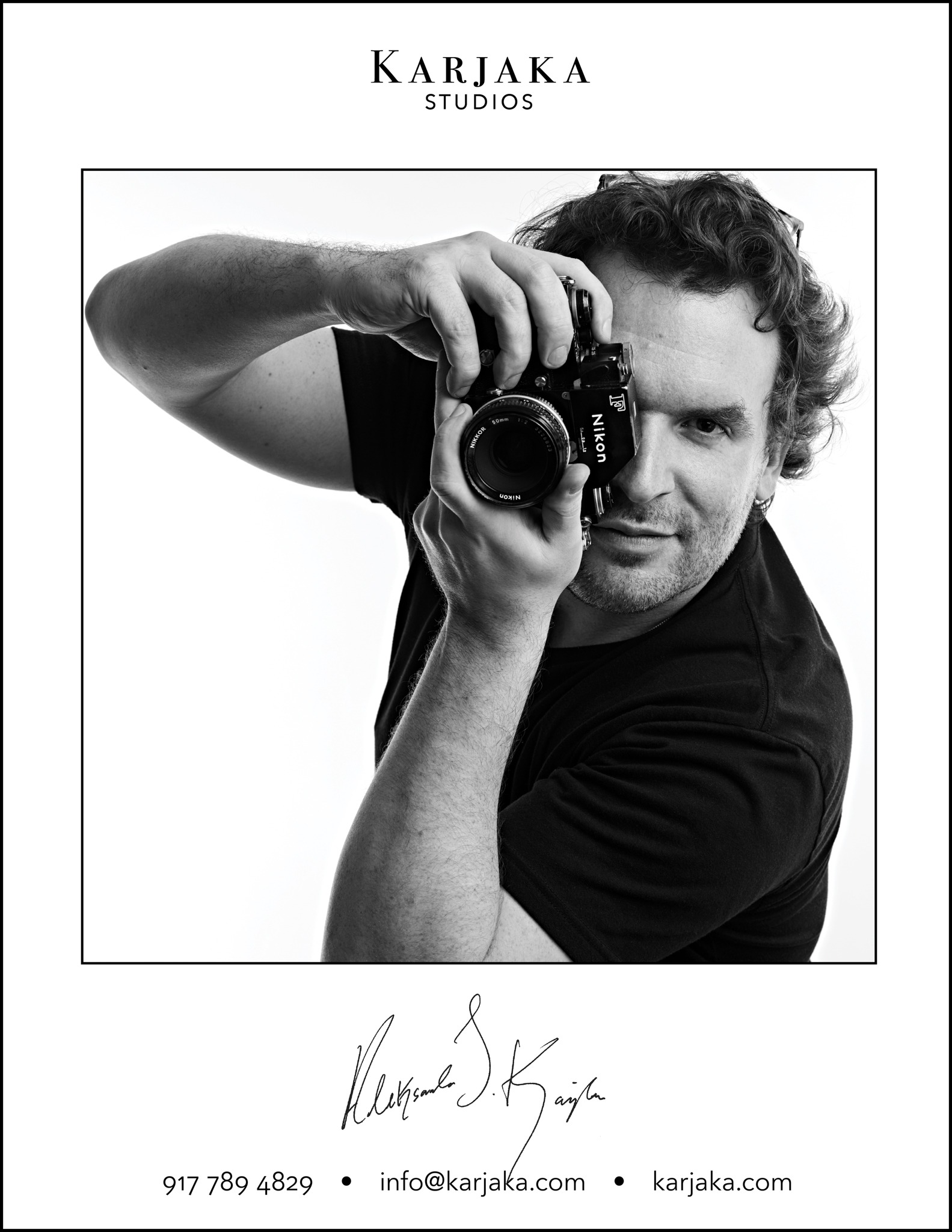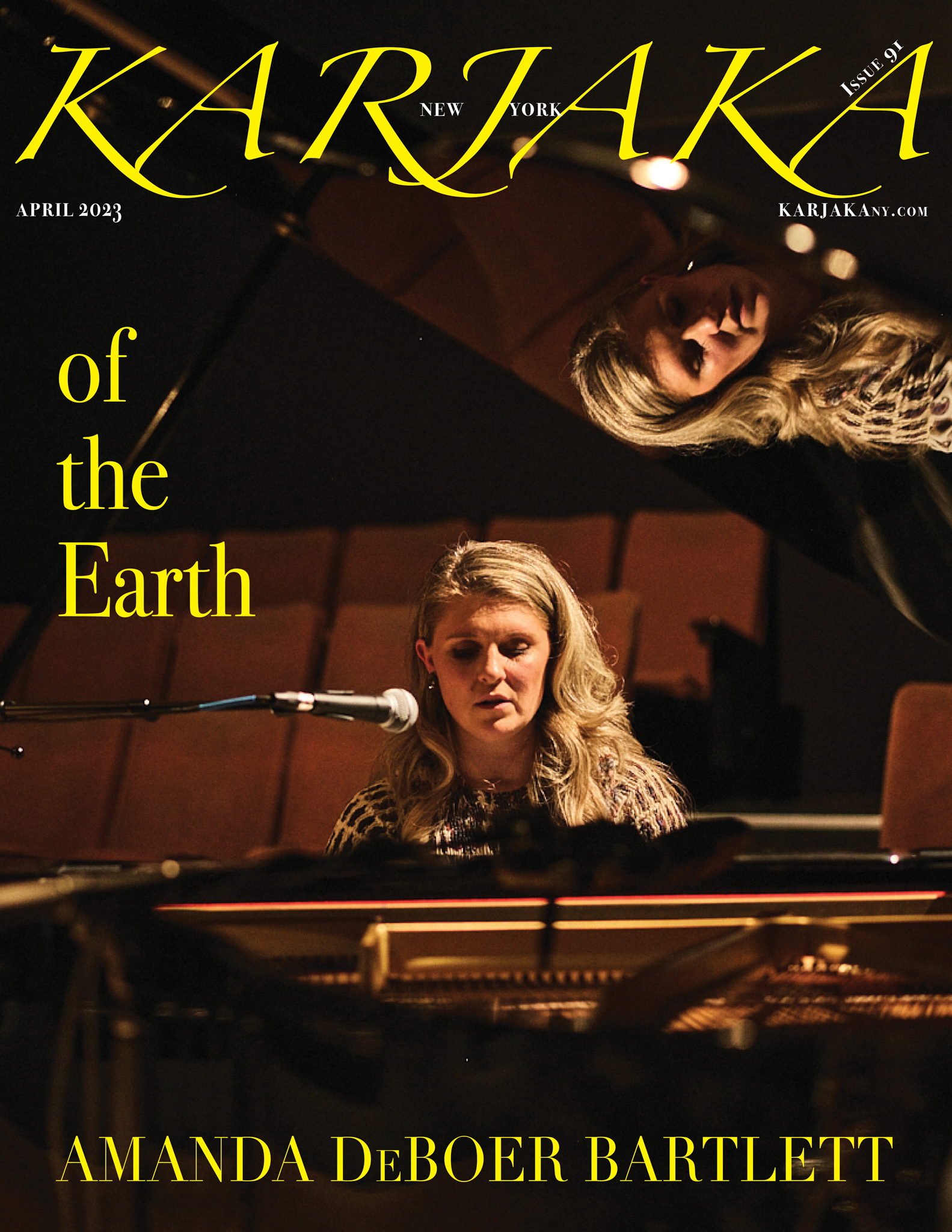
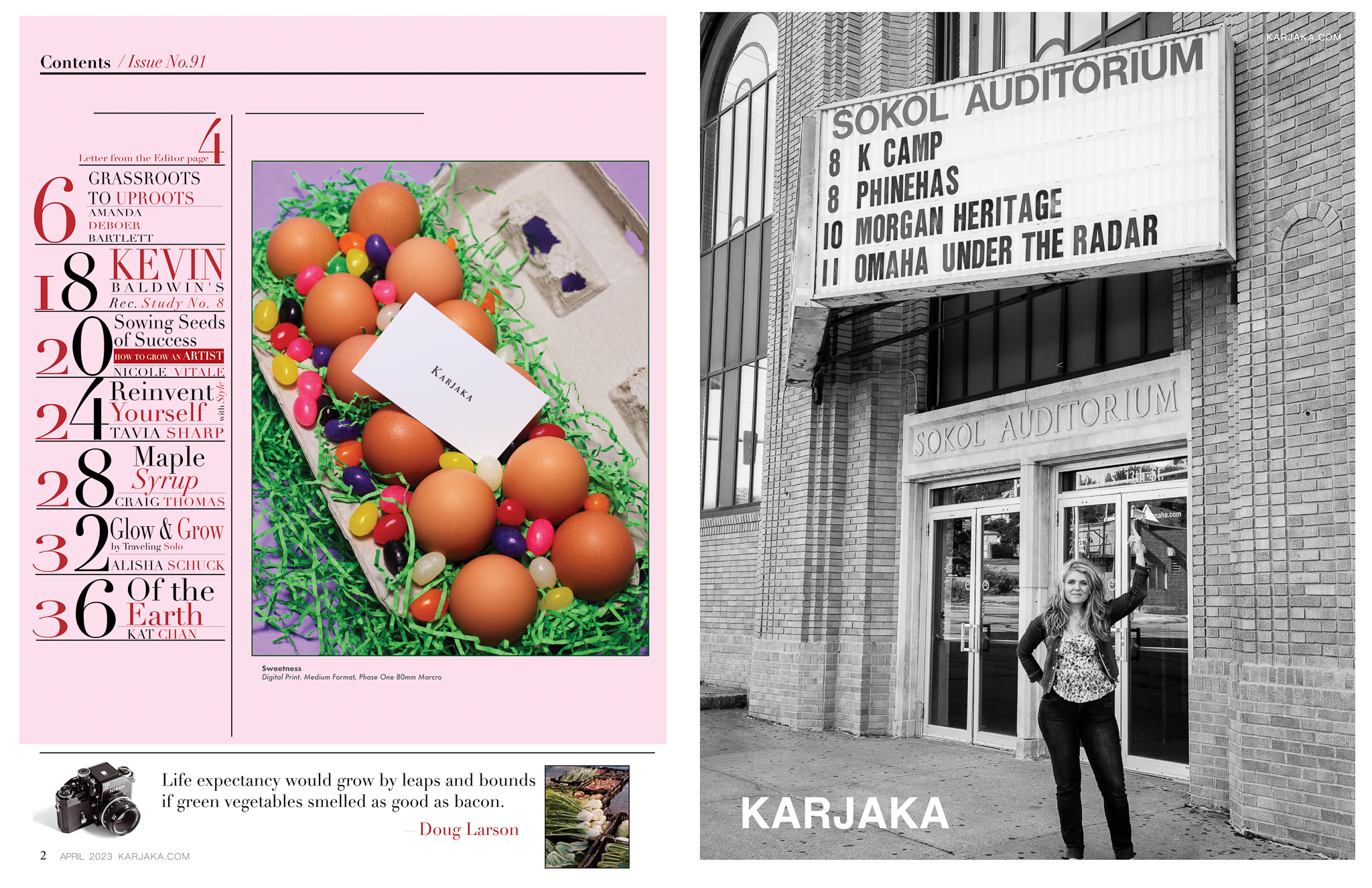
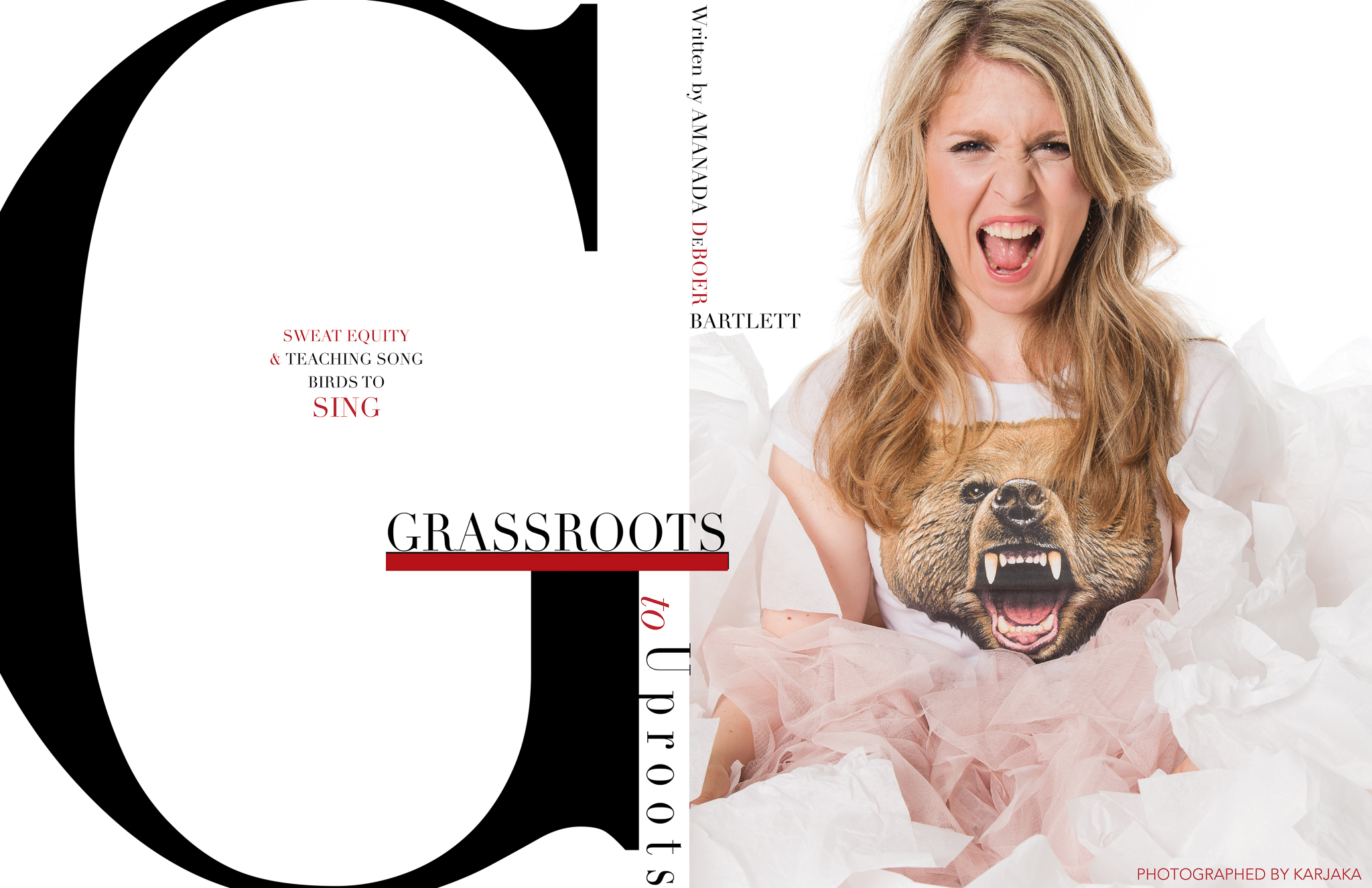
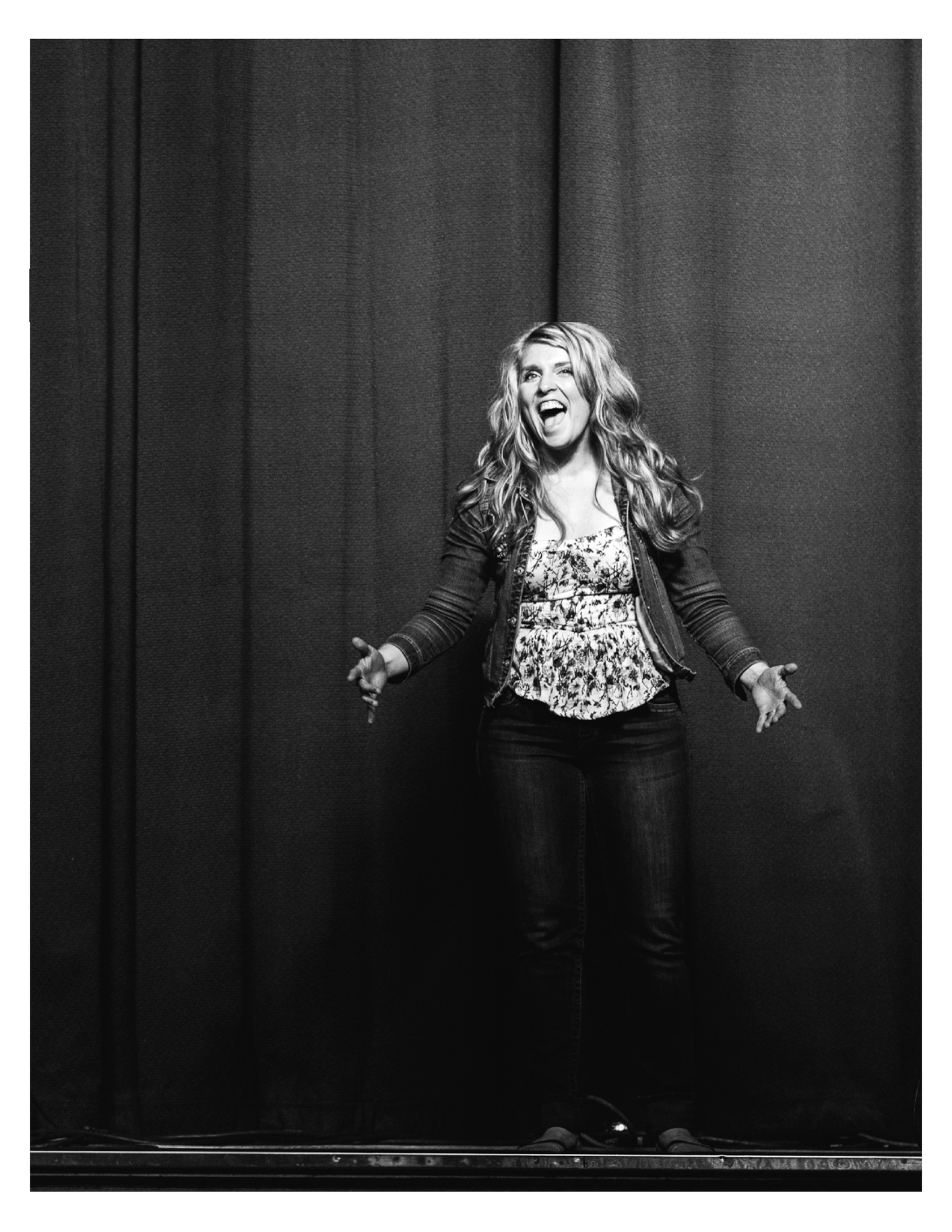
I’m sweating, and not necessarily because this venue doesn’t have air conditioning, although that’s certainly not helping. It’s 10:15pm on July 7, 2017, and Omaha Under the Radar’s headlining show, a new staging of Sir Peter Maxwell Davies’ Eight Songs for a Mad King is slated to start at 11:00pm. The event is being held at an abandoned car wash near downtown Omaha, and we’ve spent the past two weeks working with the venue managers trying to make the space as comfortable as possible, but there are limits to what we can do with our budget, which is effectively zero dollars.
I’m sweating because our event starts in 45 minutes and the venue, which is probably not up to fire code, is already overflowing with people. Sweaty, cranky people who are sitting on precarious folding chairs, on the concrete floor, on the ledge of a partial cinder block wall.
The musicians aren’t thrilled either. There’s no dressing room, their instruments are soaking up the late-night prairie humidity like sponges, and they’re wearing full-blown costumes…in an abandoned car wash.
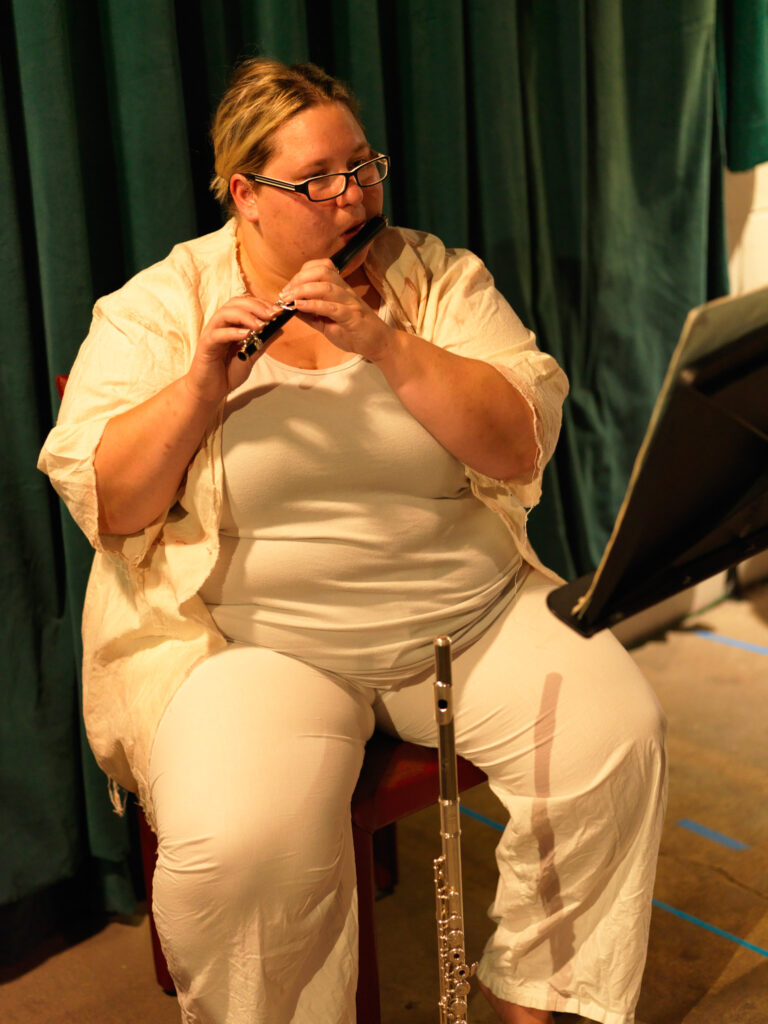
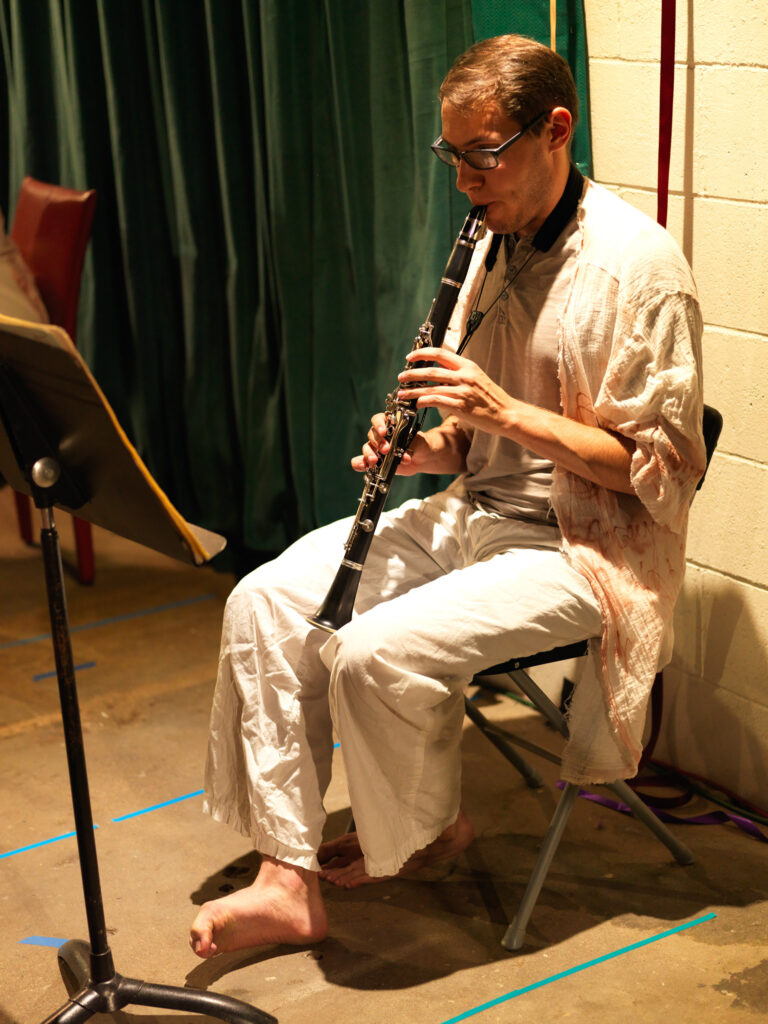
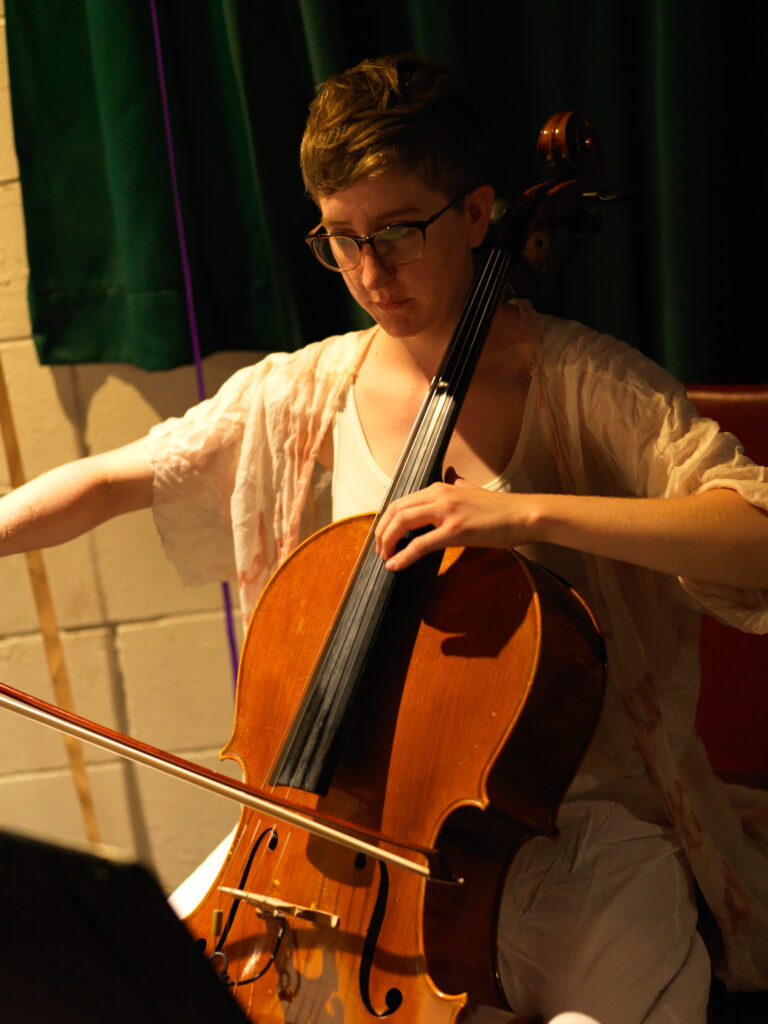
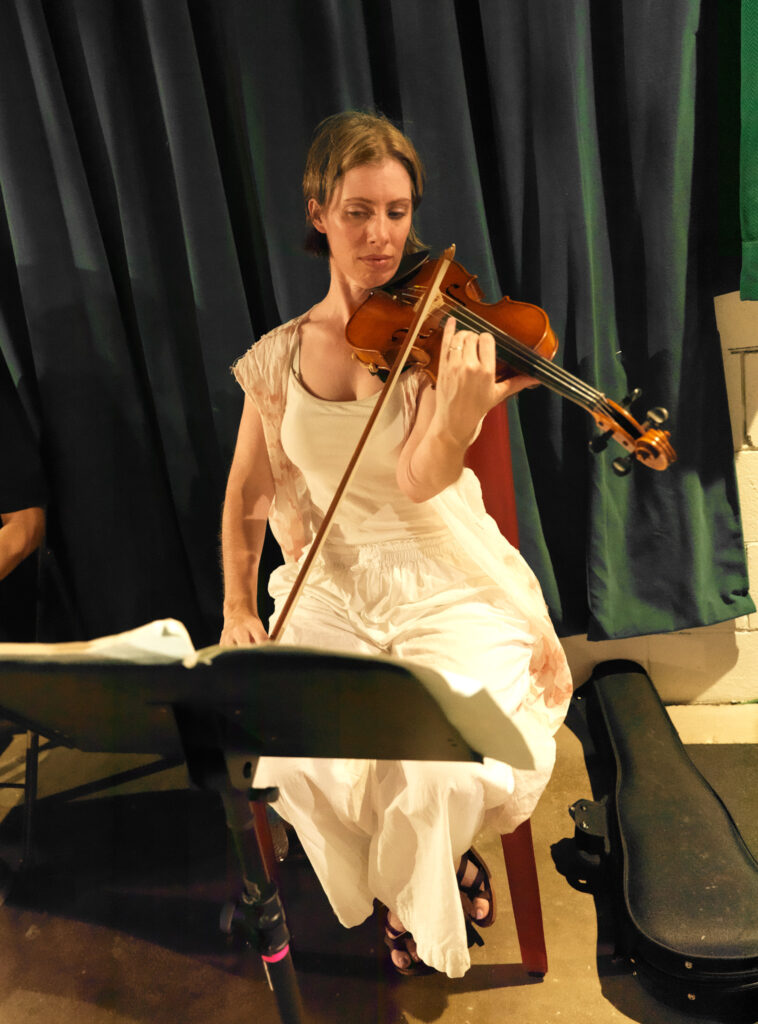
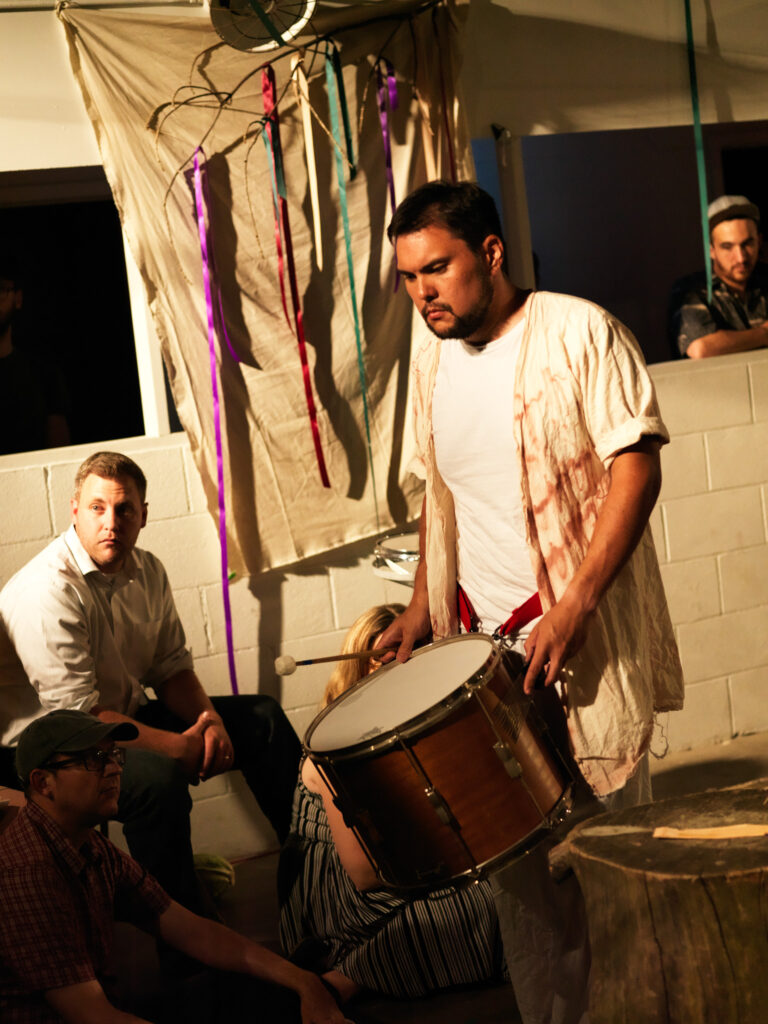
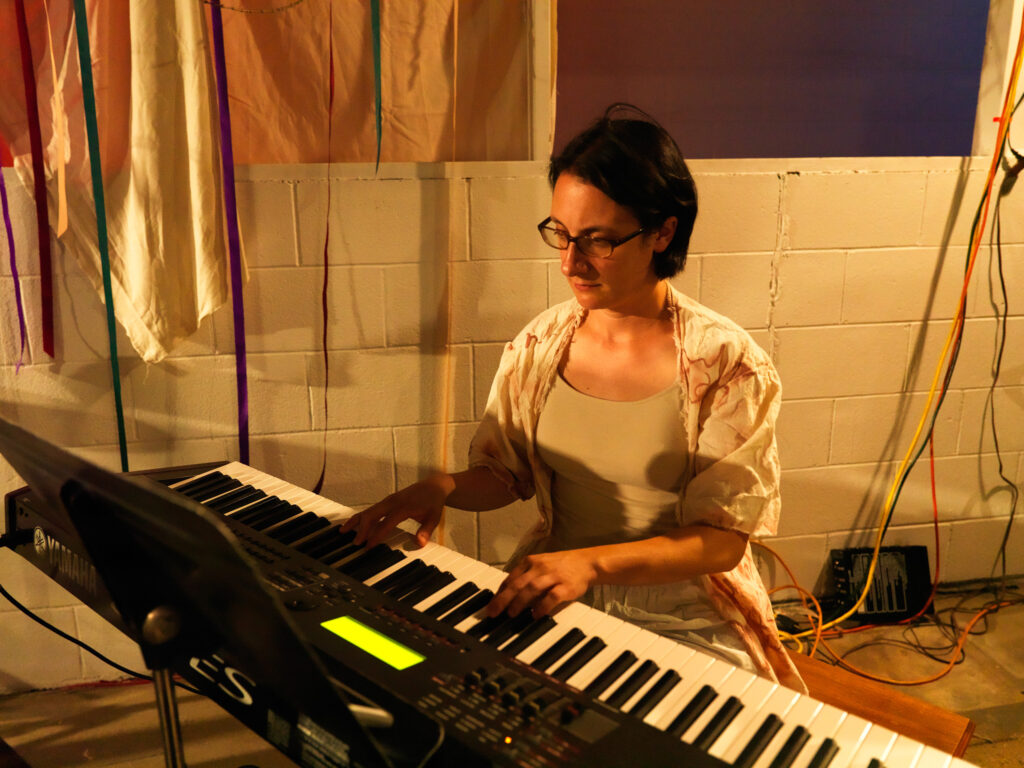
Did I mention that New Music USA, one of the big contemporary music granting organizations, decided to send a cohort of staff and donors to this year’s events? They are in the “front row” in some of the precarious folding chairs.
It was our fourth annual festival, we were finally starting to feel established, and we wanted to do something big. I had always wanted to present Eight Songs… and I finally had the players in town to make it happen. JJ Pearse, based in Kansas City, was our King George III, and everyone else was here in Omaha, making rehearsals and staging a possibility. Scott Shinbara, who was a percussion professor at the University of Nebraska at Omaha, was performing and providing gear. We hired a local staging director and costume designer. Stacey Barelos, OUTR co-organizer, was playing piano and helping run the rehearsals. JJ came up from Kansas City a couple times to work out the production. Things were going smoothly during the development, everyone sounded incredible and the design team was miraculous.
But then the whole air conditioning thing…
And it didn’t help that the air conditioning in the previous event that night, held at Project Project, lost their air conditioning, too. Well, “lost” is the wrong word. An artist turned it off without telling us because it was too noisy for their extremely quiet music, and we couldn’t get it back on after they performed. Project Project boasts particle board walls and flooring and was also, in no definition of the term, up to fire code.
What in Berio’s name was I thinking?!
Well, I was trying to run a contemporary classical and experimental music festival in Omaha, Nebraska. I was trying to prove that this music belongs everywhere and to everyone. I had no money, and I was trying to create organic, community oriented experiences in communities and in places where they don’t normally happen.
And everyone was mad at me.
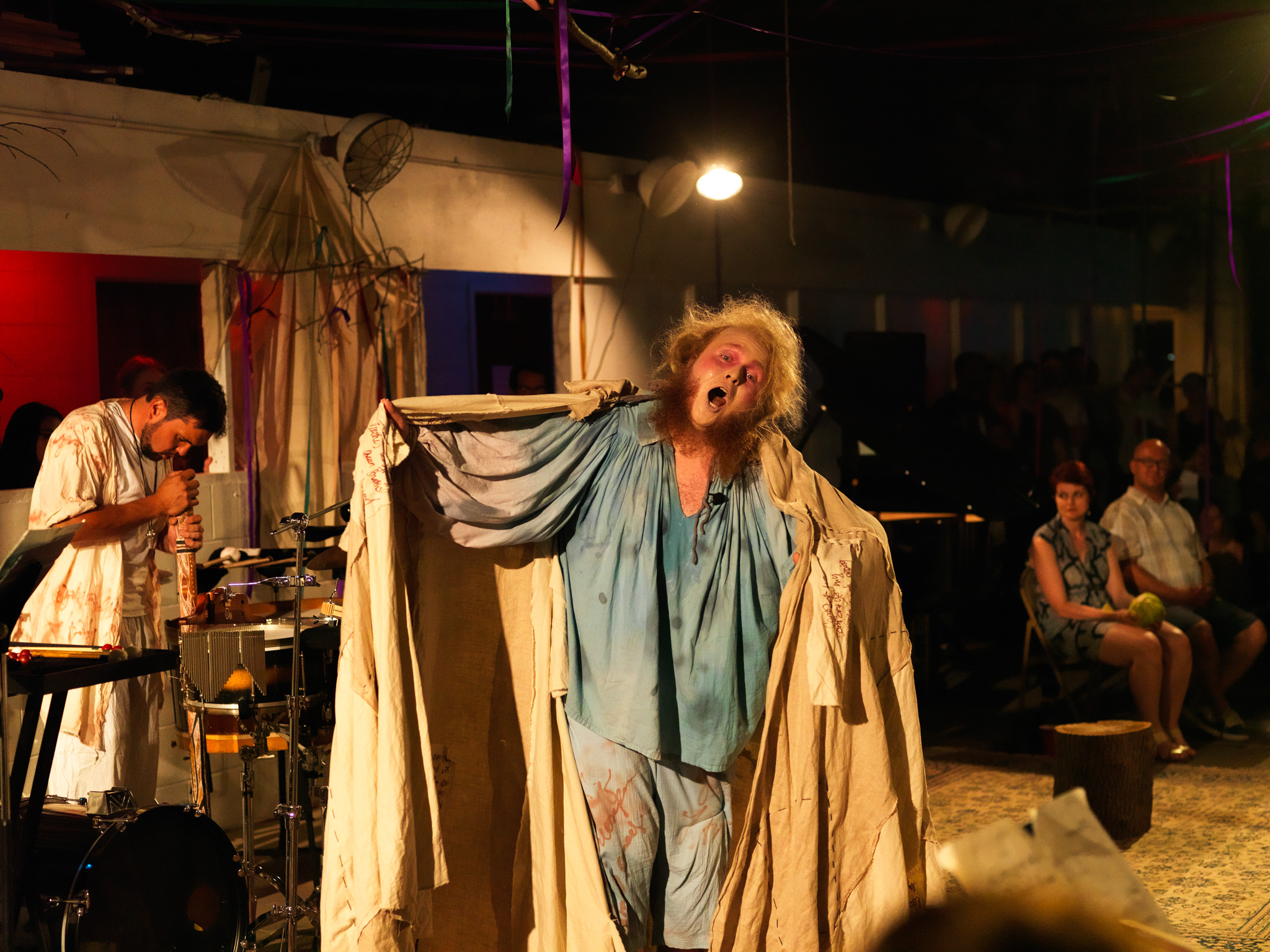
But we were going to make this work! Back at the car wash, we found some extra rugs and people started sitting among the musicians, wherever they could fit. My friend Ben went to Wal-Mart and bought us some fans. The venue managers brough out big jugs of ice water and opened the garage doors on either end of the space (the one benefit of being in a car wash…). And, I had to remind myself that too many people was a good problem to have. I have certainly performed my fair share of shows for a crowd of 2 people in an otherwise empty space.
I started Omaha Under the Radar with a local actor/playwright in 2013, but before the first festival launched, he ghosted. I was scrambling. Thankfully, a friend of mine connected me with pianist and composer Stacey Barelos, who had recently returned to Omaha, and at our first coffee meeting, I flat out asked her if she wanted to step in and help me launch the festival. She said yes without hesitating. I looped in my grad school friend Aubrey Byerly, who helped us manage finances, and we were off.
We launched the first festival in July of 2014 with over 40 acts at venues throughout Omaha. Highlights from that first year included a sold out performance of Steve Reich’s Music for 18 Musicians, an interactive theremin exhibit, and an explosive closing performance by Ken Vandermark and Tim Daisy. It felt like we’d invented a new universe by bringing all these people and places together, uniting them in the spirit of iconoclastic creativity in our hometown.
Places like Omaha rely on grassroots organizations like OUTR to nurture the community and buoy local artists. The bigger arts organizations often ignore the locals altogether, and without the infrastructure and substance of large events, it’s tough to build momentum in smaller markets. In the 9 years that I directed the festival, we presented over 500 individual artists; helped launch new collaborations, ensembles, venues, and nonprofits; introduced contemporary and experimental performance practice to hundreds of attendees who have limited access to those genres in Nebraska; survived the COVID-19 shutdowns and found digital outlets to keep presenting artists; made lifelong relationships with artists and organizers built on mutual respect and reciprocity. All of it by the skin of our teeth. There was never a dime or a minute to spare. It was our passion project, our sweat and blood. It nourished my soul, of course, but it also racked up debt on my personal credit card…especially in those first few years!
Now, almost ten years after I started planning the first festival, my life looks completely different. I have two young children and two cats, my performance career has grown steadily, and we recently moved to Chicago. After having children, it became so difficult to travel for gigs, that I was running myself ragged trying to be three places at once all the time. Omaha doesn’t have enough of a gig scene for me to make a living as a performer locally, and traveling all the time is a nightmare with young kids. I wanted to live somewhere that could provide performing opportunities that I didn’t have to set up for myself, top to bottom, from scratch, over and over again for the rest of my life. So, here we are in Chicago, planting new seeds. I’m bursting with creative energy, and grateful to bring all of the knowledge and wisdom from my time with OUTR to a new city.
There has been some continuity with this move, thankfully. My ensembles, Quince, Ensemble Dal Niente, and Hasco Duo are continuing on their course with new projects and collaborations. I recently released my first album of original music, and I organized a release show in Chicago with some dear friends from Omaha. I’ve been diving into new collaborations and deepening relationships with folks that had previously been casual acquaintances. It feels like a triumphant moment of building bridges and capitalizing on years of hard work.
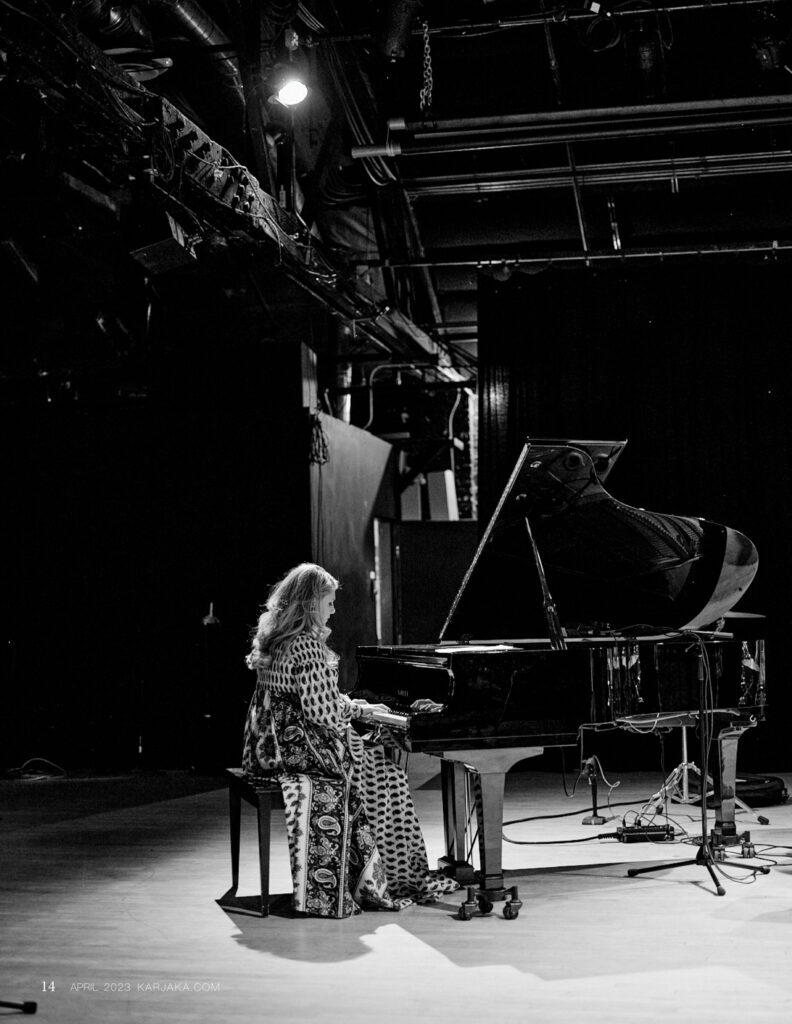
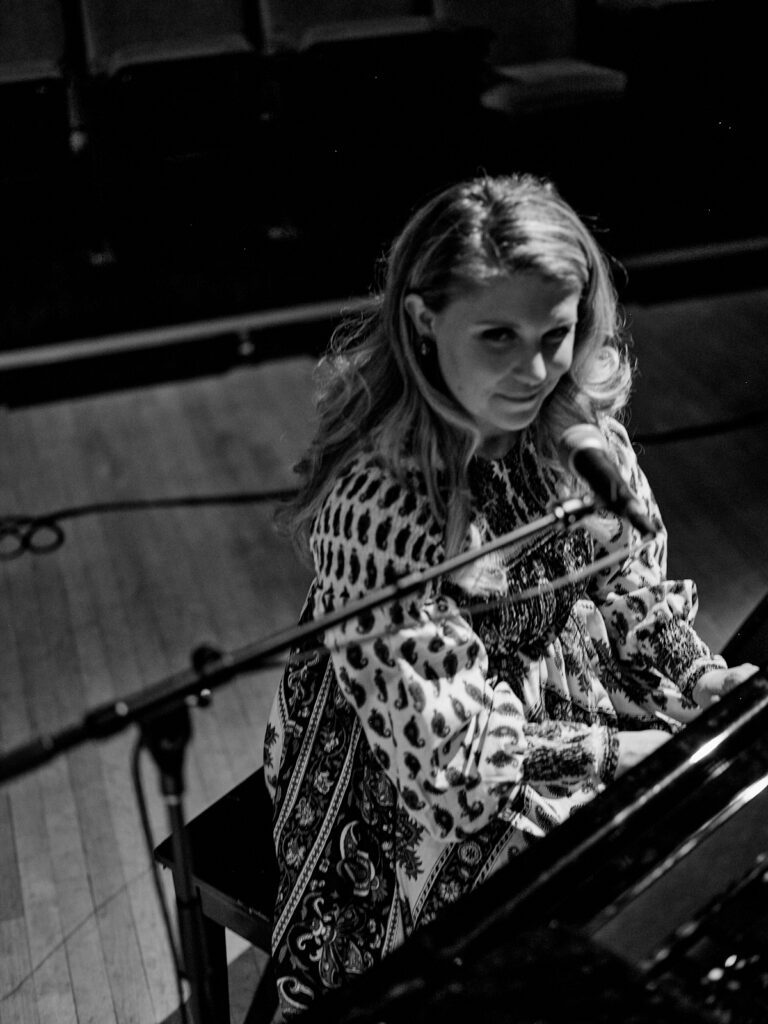
Almost six years after our production of Eight Songs for a Mad King, people still bring it up to me, unprompted. They remember the sweaty venue that felt like a cave, the anticipation and nervousness of not knowing what was about to happen, the feeling of being part of something special, and the experience of being completely immersed in a brilliant and overwhelmingly powerful performance. The alchemy of the evening was perfect. I’m so proud that we created something singular, something impossible to reproduce without all the unique circumstances in place. It was the epitome of grassroots. Did it give me grey hair and possibly take years off of my life? Absolutely. Would I go back and change it? Absolutely not.
Well, maybe the air conditioning thing…
After the event, we found a couple of 2-week old kittens by a dumpster behind the car wash and decided to bring them home. We named the black one King George III. – ADB



